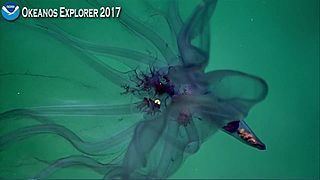Kingdom Animalia Family Pelagothuriidae Rank Species Subclass Aspidochirotacea | Subphylum Echinozoa Phylum Echinodermata Order Elasipodida | |
 | ||
Genus Pelagothuria
Ludwig, 1893 Similar Pelagothuriidae, Elasipodida, Molpadiida, Apodida, Elpidiidae | ||
Pelagothuria natatrix is a species of sea cucumber, in the family Pelagothuriidae (and the only species in the genus Pelagothuria). It may be the strangest species of its kind, as it looks like a jellyfish and is the only pelagic echinoderm known to date.
Contents
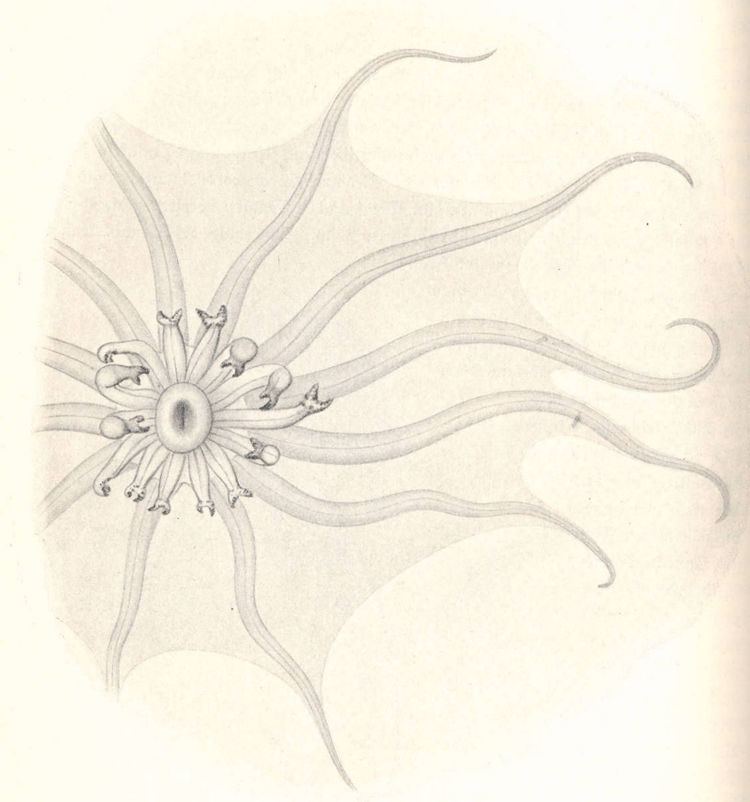
Characteristics

This sea cucumber is somewhat unusual in appearance in comparison with other sea cucumbers (and even within its family), as it looks more like a jellyfish with its large umbrella-like swimming structure supported by a ring of around 12 strongly modified oral tentacles, its small tapered body and its swimming position with the mouth on top. The body is translucent with a pale purple pigmentation. The mouth is surrounded by around 15 short feeding tentacles like any sea cucumber, and the veil can be contracted like jellyfishes do (it is interrupted at the central ventral radius). The animal seems to reach around 16 cm in total diameter.

This species constitutes the only true pelagic holothurian (and even echinoderm) known to date. However, its swimming seems mostly passive, more like slightly controlled drifting.
Habitat and repartition

This sea cucumber is extremely rare, but its geographic range seems very wide: it has been collected in the Atlantic, Pacific and Indian oceans, between 200 and 4433m of depth.
Discovery
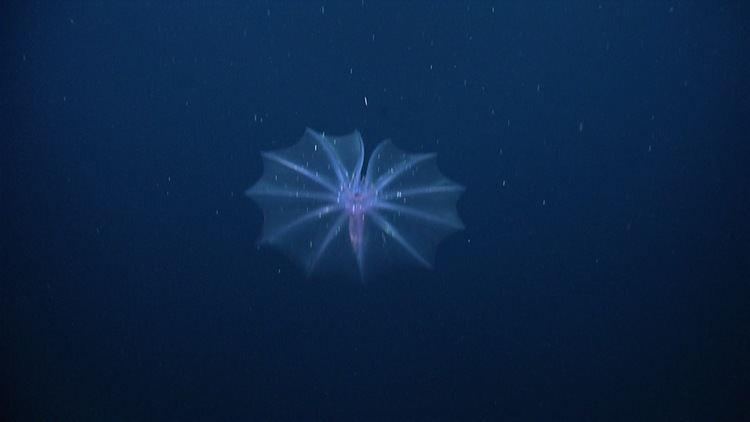
This species was described by H. Ludwig in 1893 based on trawled specimens collected by the Albatross between the Gulf of Panama and the Galapagos Islands (605-3350m deep).
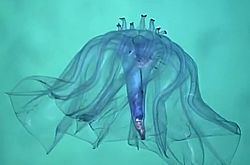
It is not until 1989 that the first in situ footage of the species is obtained thanks to a scientific expedition in Galapagos (542m deep off San Cristobal island), followed by a scientific review of deep-sea swimming sea cucumbers from Dr. John Miller and David Pawson in 1990.
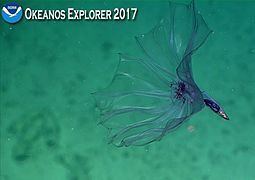
In 2011, the American scientific expedition NOAA Okeanos Explorer photographs what scientists first believed to be an unknown jellyfish, but the picture is formally identified in 2014 by Smithsonian Institute experts Christopher Mah and David Pawson as Pelagothuria natatrix. A second observation is realized in March, 2017 by the same mission off Samoa Islands (443m deep near Howland Island), identified by NOAA expert Steve Auscavitch, and returns this time a high-resolution video of the animal swimming in water column, a historic world premiere.
